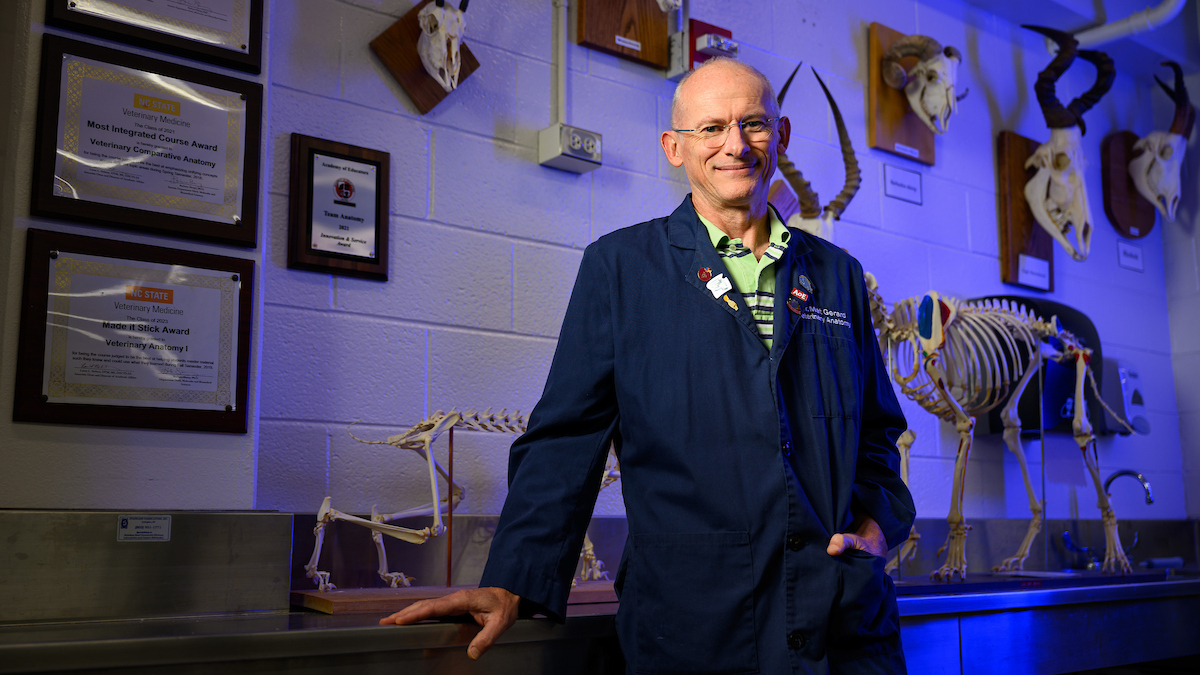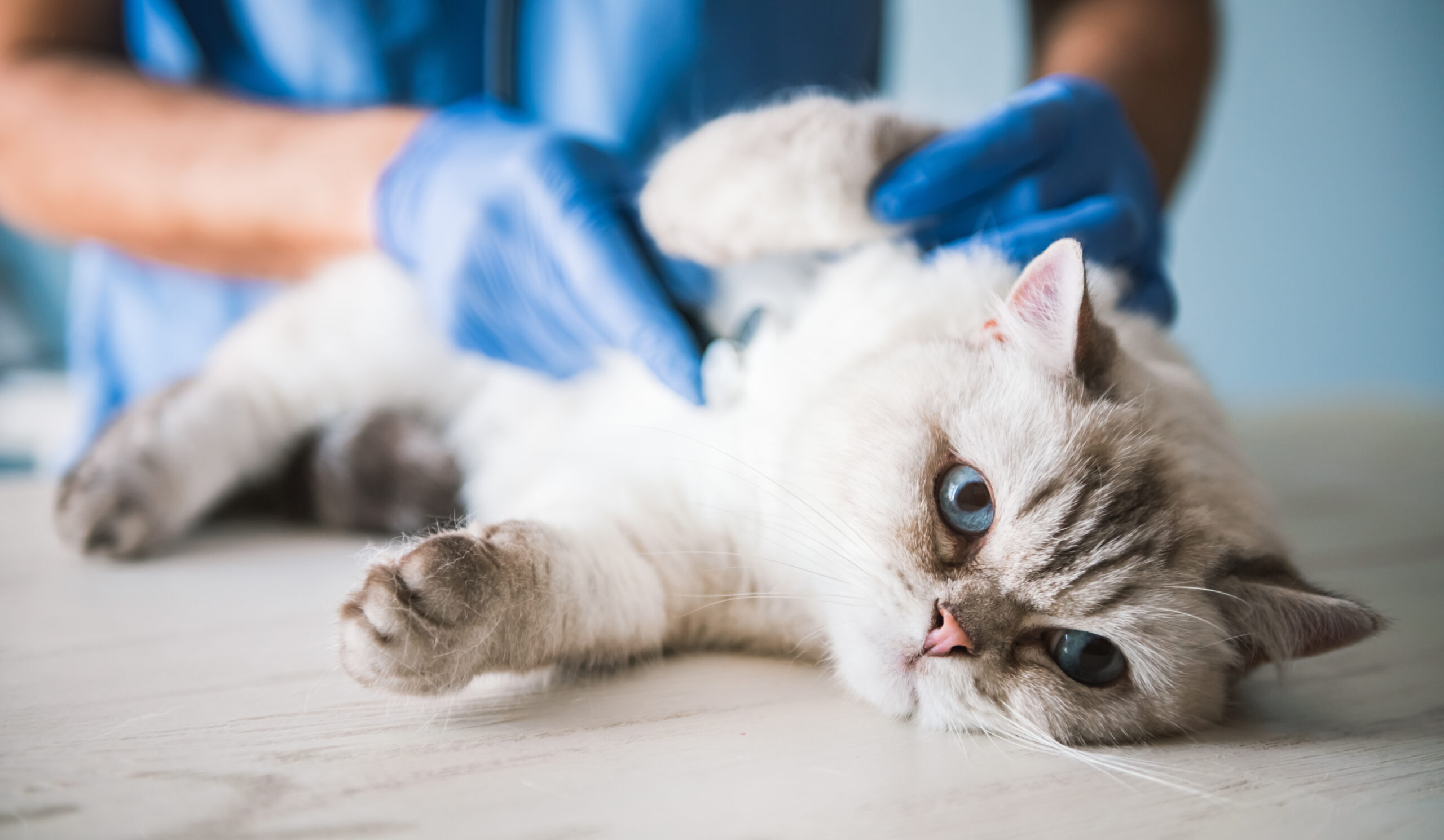NC State Veterinary Health Complex Adds Hemodialysis Unit to Specialty Medical Capabilities
North Carolina State University’s Veterinary Health Complex has added an intermittent hemodialysis unit to the list of specialty medical capabilities available to referring veterinarians and to owners whose animals are experiencing related emergencies.
One of six on the East Coast and the only one between Florida and Pennsylvania, NC State’s intermittent hemodialysis unit provides dogs, cats, and horses with a new standard of care for a variety of life-threatening conditions that require the blood to be filtered or cleansed or excessive fluid to be removed.
In hemodialysis the patient’s blood is cycled outside the body through an artificial kidney, or dialyzer, to remove dissolved wastes, toxins, or excess fluids from the bloodstream. The dialyzer is connected to a dialysis delivery system which controls the waste removal process from the animal. The purified blood is then returned to the patient.
The most common use of intermittent hemodialysis is to manage patients with kidney injury.

“Intermittent hemodialysis treatment is not a cure for kidney disease in itself,” says Michael Wood, a clinical assistant professor in the Internal Medicine Service within the Randall B. Terry, Jr. Companion Animal Veterinary Medical Center. “The main goal of the unit is to ‘buy time,’ to do the work of filtering the blood that the patient’s normally functioning kidney would do. This allows the kidneys to begin the process of regaining function and repairing themselves from the disease or injury.”
Dr. Wood, who received specialty training to manage the new hemodialysis offering and treat patients, says the unit utilizes the same technology used for human patients. The main veterinary consideration is one of scale.
“If we are treating a cat, we’ll use a human neonatal setup,” says Dr. Wood. “If we are treating a larger dog we’ll use a human pediatric setup. To treat larger animals such as horses we will scale even more sometimes using multiple dialyzers and/or machines. So it is a matter of catering to the patient and each patient receives a unique dialysis prescription for the specific treatment that is required.”
Unlike human patients who could be on dialysis for months or years waiting for a kidney transplant, veterinary patients would typically receive treatment for a couple of weeks or a month, the time needed for recovery from poisoning or injury.
Another common use of intermittent hemodialysis is the removal of drugs or poisons from the body. Some of the common intoxications that can be treated with hemodialysis include the ingestion of nonsteroidal anti-inflammatory medications such as ibuprofen and acetaminophen, caffeine, alcohol including ethylene glycol, and anticonvulsants such as phenobarbital.
Dr. Wood expects that the majority of the patients his service will see will have an acute kidney condition. This would include dogs with leptospirosis infection from contact with stagnant water, soil, or mud harboring the bacteria; animals that ingest a toxin such ethylene glycol from antifreeze; animals with volume overload meaning the patient cannot expel excess fluid; animals with uremic toxicity; animals with severe electrolyte imbalances or other blood issues.
While the unit can treat chronic issues, such as cats with kidney disease, the extended care required may be cost prohibitive for many animal owners.
According to Dr. Wood, a candidate for intermittent hemodialysis will either be referred to the Internal Medicine Service by the family veterinarian or owners may bring a seriously ill animal to the Emergency Service. Case history, diagnostics including blood work, and consultations would determine if intermittent hemodialysis is appropriate.
When admitted, the patient may be sedated or anesthetized once for the placement of a hemodialysis catheter in the jugular vein. This catheter remains with the patient throughout all subsequent treatments and additional anesthesia is seldom required. Each treatment session would last three to five hours with the fully conscious patient resting calmly in a specially designed enclosure. A hospital staff member remains with the patient throughout the session. A typical outpatient procedure would involve treatments on Monday, Wednesday, and Friday with the patient returning home in between sessions.
The cost will vary depending upon treatment. The initial dialysis session would be $900 to $1,200 and subsequent sessions $560 to $850. A dog recovering from leptospirosis may require one to two weeks of treatment while another dog with a severe toxicity might need four or six weeks.
Referring veterinarians may consult with Dr. Wood by calling the Internal Medicine Service at 919.513.6670.
[section_subtitle] For more information: [/section_subtitle]
Internal Medicine Service


